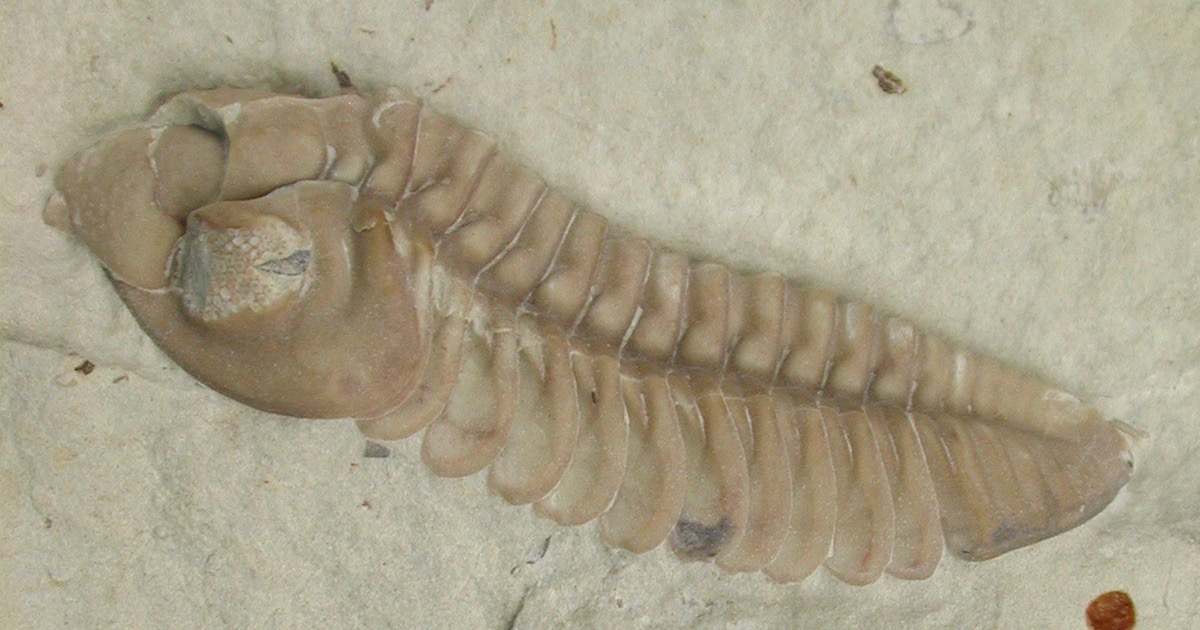A Tribute to the Trilobites
What were trilobites?
Trilobites were marine arachnomorph arthropods that were first introduced during the Cambrian Explosion in which life evolved rapidly, creating many new species of animals. The trilobites were one of the most successful early animals, existing for nearly 300 million years. The trilobites went extinct about 250 million years ago in the end-Permian extinction.
 |
What types of trilobites were there?
There were many different species of trilobites spanning their 300 million year reign. Some include the "Kainops Invius" from the Early Devonian and the "Paradoxides sp" from the late Cambrian. Different types of trilobites had different lifestyles. There were trilobites that moved over the seabed as predators, filter feeders, and scavengers. Others swam and some even crawled on land.
 |
| A very well preserved Kainops Invius specimen |
| A Paradoxidae specimen |
The evolution of the trilobite
As said before, the Cambrian Explosion brought a lot of new life. New life such as early trilobites. Trilobites had made a sudden appearance, as there is an evolutionary gap from earlier animals like Spriggina, which can be found in 550 million-year-old rocks in Australia. Spriggina predates trilobites by about 30 million years, making it possible that they evolved during this time period.
| Spriggina |
One of the earliest trilobites known in fossil records are called "Redlichiiida" from 540 to 520 million years ago. All trilobites are thought to have originated from modern-day Siberia, later spreading out throughout the oceans. Throughout the trilobite's reign, they saw massive diversification. For such a long-lasting species of animals, it makes sense that their evolutionary history evolved to fit their environment. As new predators came to be different trilobites evolved to have better advantages. Some trilobites evolved to have advanced vision evolving compact eyes, whilst others evolved a pill bug defense strategy of rolling into a ball. Cambrian trilobites diversified into different types and continued to evolve. Some Cambrian trilobites include the Archegonus, Agnostida, and Corynexochida. The exact reason as to why the trilobites went extinct is not clear. With repeated extinctions throughout the trilobite fossil records, it is speculated that they had gone extinct due to a combination of causes that are unknown. After the mass extinction at the end of the Devonian era, the remaining trilobite species were bottlenecked into Proetidas. The decreased diversity of trilobites combined with the lowering sea level meant that the trilobite species was finally reaching extinction after 300 million successful years. Though trilobites are not known to have any descendants, one of their closest relatives is Horseshoe Crabs.
 |
| Proetidas |
| Archegonus |
| Redliichida |
Fossilized Trilobites
Trilobites are thought to be primarily marine animals (though there is evidence that some may have crawled onto land) since their fossilized remains can be found with other saltwater organisms such as Brachiopods, Crinoids, and Corals. Remnants of trilobites can be found in different (grades, qualities? find word later) ranging from exoskeletons, trilobite tracks, and preserved bodies. Trilobite fossils can be found all around the world, with thousands of known species. Since they appeared quickly and were preserved so well, they serve as good index fossils, letting geologists date the age of rocks which they are found in. Trilobites were one of the first fossils to attract lots of attention, and new species are being found every year.
 |
| Crinoids |
| Brachiopod |


Comments
Post a Comment